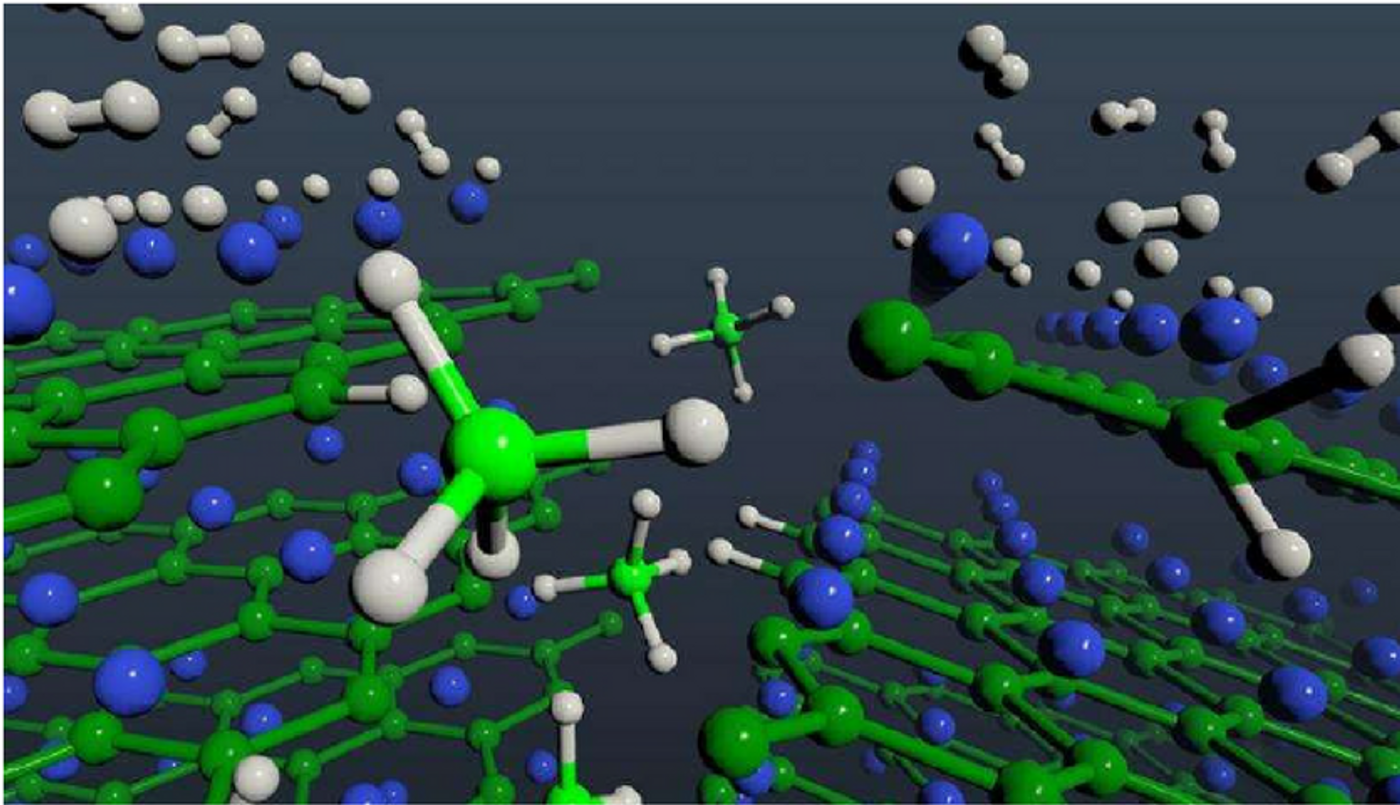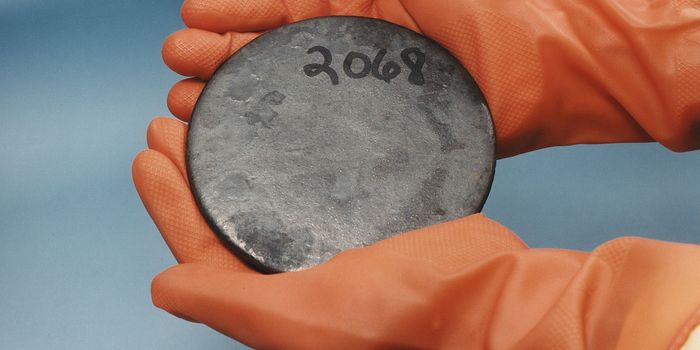Solid-state storage technology can spread the use of hydrogen vehicles
Hydrogenation of magnesium diboride illustrated in the ball-stick model.
Credit: Lawrence Livermore National Laboratory
Using hydrogen as a fuel is an important option for reducing pollution from the tailpipe. Hydrogen has a very low volumetric energy density (the amount of energy contained in a specific volume of fuel) at ambient conditions, equal to about one-third that of methane. Even when the fuel is stored as liquid hydrogen in a cryogenic or compressed storage tank, the energy density of hydrogen is still smaller than that of gasoline. Many car manufacturers have developed hydrogen storage technologies such as compressed hydrogen, but the reliance on high-pressure storage tanks make building the infrastructure such as refuel station expensive and challenging.
Many novel storage technologies are currently under development. They either apply chemical principles that form complex hydrogen compounds (such as metal and non-metal hydrides, carbohydrates, metal-organic frameworks and ammonia borane) or physical principles that trap hydrogen in tiny space (such as cryo-compression, carbon nanotubes, glass capillary, and microspheres). Among them, storing hydrogen in solid metal hydrides compound offers much more compact onboard storage systems and reduced operating pressures.
Magnesium diboride (MgB2) is an ionic compound known for its superconductivity. But it also has a less studied property: through direct hydrogenation, it can be turned into magnesium borohydride (Mg(BH4)2), a promising hydrogen storage material that has high hydrogen content and attractive thermodynamics. However, complex metal hydrides are often characterized by poor kinetics. And the hydrogenation takes many steps, with intermediate products that can slow down the reaction. According to a recent report, material scientists from the Lawrence Livermore National Laboratory (LLNL) have discovered the key mechanism behind the transformation from MgB2 to Mg(BH4)2. They found that in the initial stages of hydrogen exposure, MgB2 can be directly turned into Mg(BH4)2 without the formation of intermediate compounds. These intermediates are a major roadblock toward the quick refueling of hydrogen vehicle. Finding ways to avoid them will help bring MgB2 a step closer the real-world storage application. The research team also discovered that the hydrogenation occurs in two separate reaction stages as hydrogen molecules split and migrate to exposed edges in the material.
Speaking about the conception and execution of their work, Tae Wook Heo, a LLNL materials scientist and co-author of the paper said: “We showed that if you can combine spectroscopy, first principles calculations and kinetic modeling, it's possible to understand the reaction pathway and specific chemical mechanism in a way that hasn't been done before.” “This research provides a roadmap for integrating experiments and theory toward a more comprehensive understanding of complex reactions in solid-state hydrogen storage materials,” explained Brandon Wood, the project leader and supervising author.
The research is part of a broader study of complex metal hydrides being conducted through the Department of Energy's Hydrogen Storage Materials - Advanced Research Consortium (HyMARC).
How Hydrogen Fuel Is Made. Credit: Discovery Channel
Source: Lawrence Livermore National Laboratory/Physical Chemistry Chemical Physics









